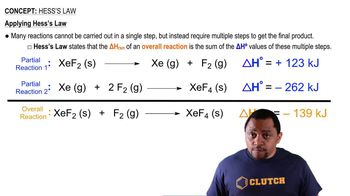Textbook Question
Sulfur tetrafluoride 1SF42 reacts slowly with O2 to form sulfur
tetrafluoride monoxide 1OSF42 according to the following
unbalanced reaction:
SF41g2 + O21g2¡OSF41g2
The O atom and the four F atoms in OSF4 are bonded to a
central S atom.
(e) For each of the molecules you drew in part (d), state how many
fluorines are equatorial and how many are axial.
1
views




